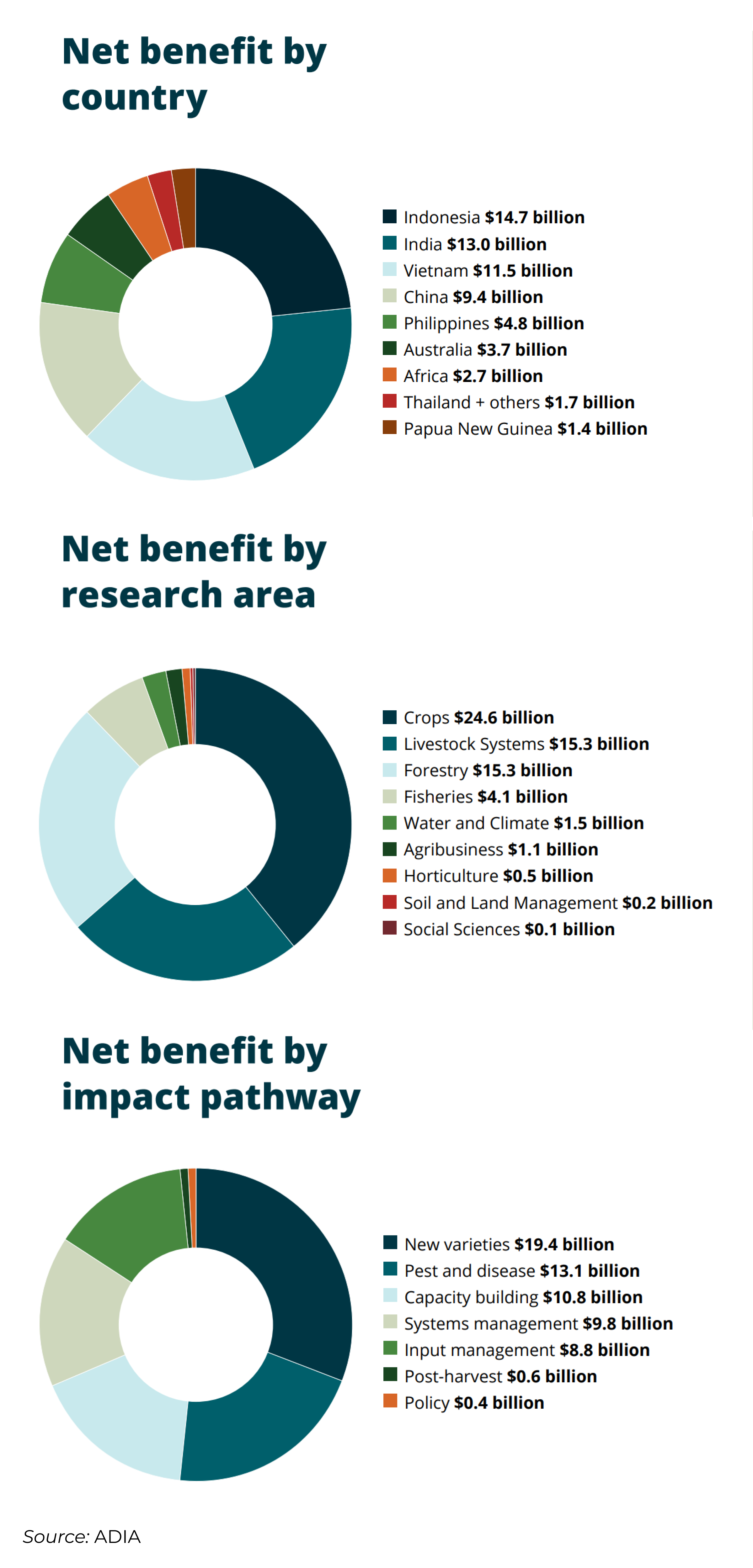- HomeHome
-
About ACIAR
- Our work
- Our people
-
Corporate information
- ACIAR Audit Committee
- Commission for International Agricultural Research
- Policy Advisory Council
- Agency reviews
- Executive remuneration disclosure
- Freedom of information (FOI)
- Gifts and benefits register
- Information publication scheme
- List of new agency files
- Contracts
- Legal services expenditure
- Privacy impact assessment register
- Commonwealth Child Safe Framework
- Benefits to Australia
- Careers
- 40 years of ACIAR
-
What we do
- Programs
- Cross-cutting areas
- Resources
- Where we work
-
Funding
- Research projects
- Fellowships
-
Scholarships
- John Allwright FellowshipScholarships to study in Australia for ACIAR partner country scientists to have Australian postgraduate qualifications
- ACIAR Pacific Agriculture Scholarships and Support and Climate Resilience Program
- Alumni Research Support Facility
- Publications
- News and Outreach
Impact
Image

Quantifying ACIAR impact
ACIAR has been systematically undertaking independent impact assessment studies of its portfolio of research activities for more than 30 years.
Independent evaluations of ACIAR projects and programs have consistently found high returns on investment, reflecting the quality of Australian agricultural science and our partnership model, which ensures a high level of engagement with in-country partners, and a high level of adoption of research results.
As of February 2022, ACIAR has assessed the economic returns from 200 research-for-development projects.
High return on investment
The total benefit from these research project investments is estimated to be $62.9 billion
Of this $62.9 billion, $59.2 billion has been realised in developing countries and $3.7 billion has been realised in Australia.
To achieve this, ACIAR invested $546 million and leveraged $886 million in co-finance or in-kind contributions.
This means up to $25.2 billion of the value realised can be directly attributed to ACIAR funding.
Some projects delivered dramatic returns, some were more modest, but the majority paid for the individual investments. The average benefit to cost ratio across the projects studied is estimated to be 43:1.
On average, for every dollar spent on research and development ACIAR projects delivered $43 in return.
As a few high performing projects drag up this average, a more accurate representation may be a median – which is $17.40 returned for every dollar spent.
The benefits directly attributed to ACIAR funding more than covers not only total ACIAR expenditure across these projects, but also total ACIAR investment since its inception, of about $3.28 billion.
The findings of the independent evaluations are consistent with studies by the United States Agency for International Development in 2017, which unequivocally concluded that lifting agricultural productivity in ways that help smallholders to access higher-value markets is among the most effective forms of international development for reducing poverty and catalysing economic growth.



